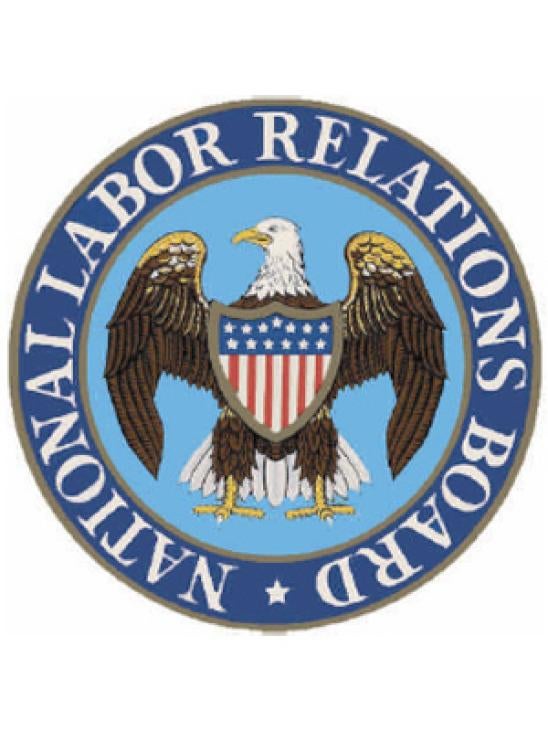Recent developments at the National Labor Relations Board should cause leaders of non-profit Community Rehabilitation Programs (“CRPs”) to reevaluate the substantial risks that the law and organized labor pose to the relationships between CRPs and the special individuals that they help. The developments also reveal how the NLRB’s election procedures, known among employers as “ambush election rules” for their fealty to conducting elections as soon as possible, expose the Board to a violation of the Administrative Procedure Act.
CRPs liberate individuals with severe disabilities by providing them with intensive rehabilitation and training that permit them to pursue a path toward independence. For individuals whose severe limitations make them generally unemployable in the competitive job market, a CRP can provide life-changing, valuable options. Of course, a valuable work environment also tends to attract union organizers looking for union dues, and CRPs are not immune to this phenomenon. Unions have a history of targeting CRPs for organizing, and recent legal developments make clear that CRPs should be prepared to protect rehabilitative relationships from union activity.
Unions Target AbilityOne Rehabilitation Participants
The NLRB has issued a line of cases that address the circumstances under which unions may (or may not) interject themselves into CRPs’ relationships with individuals with significant disabilities. For years, the NLRB has declined to assert jurisdiction over sheltered workshops, rehabilitative vocational programs and similar programs that are primarily rehabilitative in nature. As a majority of the NLRB explained in Brevard Achievement Ctr., Inc., a 2004 case, the Board declines to assert jurisdiction over relationships that are primarily rehabilitative because the “imposition of collective bargaining on relationships that are not primarily economic does not further the policies of the Act.” The Board has held that the Act is premised on the view that, in arms-length economic relationships, areas of conflict may exist between employers and employees that may be resolved through a contest of economic strength. This premise, which includes granting union officials a monopoly over representation of employees, is not well-suited to a setting that is primarily rehabilitative.
The issue arises particularly in the context of the AbilityOne federal contracting program which provides employment training opportunities to CRPs. In determining whether individuals with severe disabilities are statutory employees and thus subject to union organizing under the NLRA, the Board examines the nature of the relationship between the individuals and the CRP. If that relationship is guided primarily by business considerations, such that it can be characterized as “typically industrial,” the individuals will be found to be statutory employees.
If, on the other hand, the relationship is primarily rehabilitative in nature, the individuals will not be found to be statutory employees, which means they are outside the scope of the NLRA. The Board examines numerous factors, including the existence of counseling, training, or rehabilitation services; the existence of any production standards; the existence and nature of disciplinary procedures; the applicable terms and conditions of employment (particularly in comparison to those of nondisabled individuals employed at the same facility); and the average tenure in the program, including the existence/absence of a job-placement program.
As Applied to CRPs, Ambush Election Procedures Implicate APA
In the Brevard Achievement Ctr. case, a majority of the NLRB followed established case law and found that the individuals at issue in the case were not statutory employees under the NLRA because their relationship with the CRP was primarily rehabilitative. The ruling protected the special rehabilitative relationships from intrusion by union officials, with a Board majority holding that “[t]he imposition of collective bargaining at the rehabilitative stage could interfere with the rehabilitative process itself, and thereby delay the day when the clients can enter in the mainstream of economic society.
The Brevard Achievement Ctr. case did not cause any significant change in established precedent governing the unionization of individuals with severe disabilities who participate in CRPs. What stands out, however, is a dissenting opinion by Members Wilma B. Liebman and Dennis P. Walsh, who called for wholesale application of the NLRA to individuals with significant disabilities participating in CRPs. The dissent is remarkable for its express willingness to insert union officials with no rehabilitative qualifications between CRP professional counselors and the severely disabled, whom the dissenters acknowledged are not capable of independently obtaining a job in a competitive work environment.
In at least two NLRB cases this year, a union has relied on the dissenters’ theory and petitioned the NLRB to become the exclusive representative of individuals with severe disabilities who were obtaining rehabilitative services from a CRP. In one case, the union initially sought to include both non-disabled workers and individuals with significant disabilities in the bargaining unit. In another case, the union demanded exclusive bargaining power over a unit that consisted entirely of individuals with significant disabilities. In both cases, the CRP succeeded in resisting the union organizing campaigns, but not without having to put up a substantial defense.
Along the way, the NLRB’s procedures exposed the rehabilitative program to significant risk. Specifically, Board procedures require that respondents in representation cases disclose private information relating to the individuals in targeted bargaining units, including names, addresses, email addresses, phone numbers, and shift designations. In a case in which the entire bargaining unit consists exclusively of individuals with severe disabilities, compliance with the Board’s disclosure requirements expose a CRP to a violation of privacy rules under the Health Insurance Portability and Accountability Act.
NLRB Election Rules Ignore HIPAA Protections
The conflict between HIPAA and the Board’s procedures expose the Board to a violation of the Administrative Procedure Act because the Board’s rules effectively would require a CRP to disclose protected health information in violation of HIPAA. Despite its acknowledgment in the preamble to the final rule that protected health information was far more sensitive than the limited information it thought its rule would require, the Board entirely failed to consider this important aspect. Instead, the NLRB opted for a general rule requiring production of the required information without any regard to whether the information was protected under federal law governing private medical information. Nor did the Board provide any exception for security or advanced protocol in cases in which the disclosure of the full names and contact information of individuals would equate to a prohibited disclosure of protected health information under HIPAA.
If unions continue to target organizing activity at CRP participants, the Board’s election procedures could be the subject of a serious challenge under the APA. Failure to disclose the required information imposes significant consequences under the Board’s rules, including the waiver of important legal arguments. The Board’s procedures have other requirements that dramatically compromise a CRP’s ability to defend its program and rehabilitative relationships with program participants.
In the past, rehabilitation professionals generally have been able to focus on the best interests of CRP participants without interference from union officials. Now, recent developments threaten CRPs and the tremendous benefits they deliver. CRP leaders should be prepared to respond to the heightened risks, including by careful evaluation of the legal factors that affect whether, in the eyes of the NLRB, the CRP’s relationship with individuals with significant disabilities is primarily rehabilitative.




 i
i


